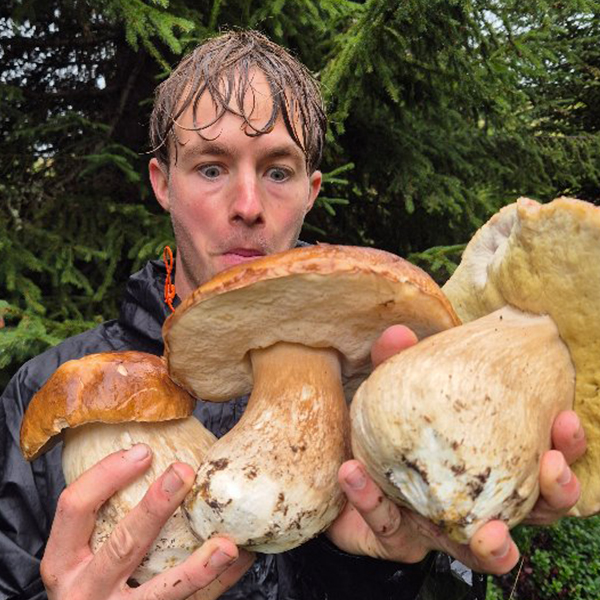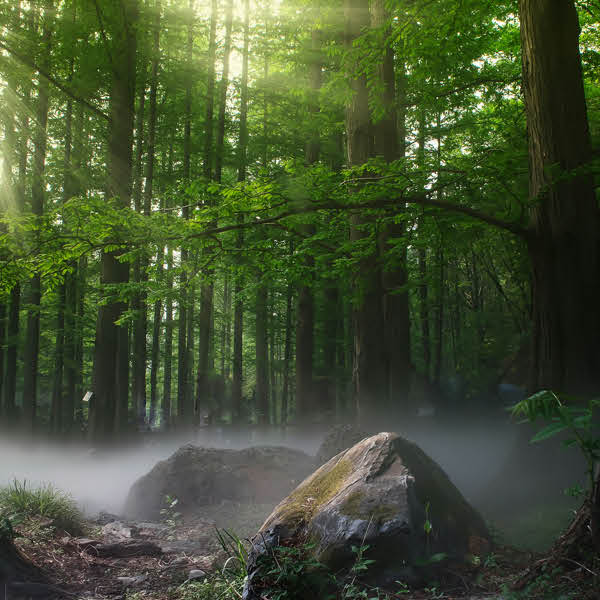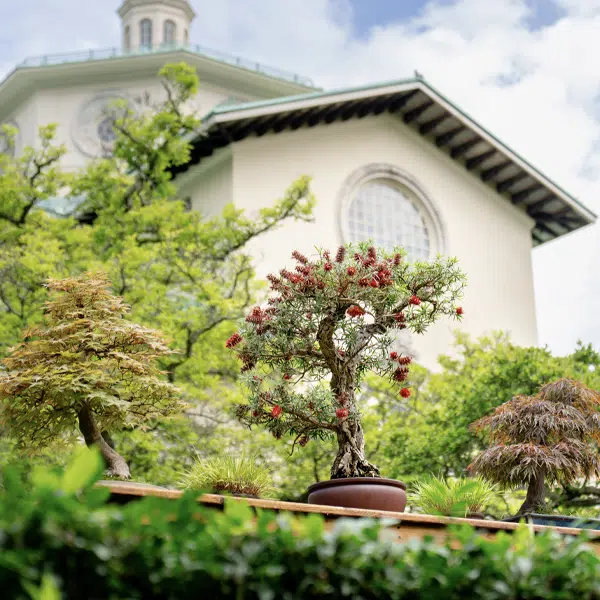
Photo: zenung/Depositphotos
This post may contain affiliate links. If you make a purchase, My Modern Met may earn an affiliate commission. Please read our disclosure for more info.
If you love unusual plants and are looking to add to your garden, you may want to consider a lithops. This genus of succulents is native to southern Africa and the plants are quite a sight to behold. Nicknamed living stones, they do actually look like smooth pebbles. Really, these succulents look so much like stones, that you may be tempted to pick one up and skip it across a body of water.
Lithops owe its unique appearance to the fact that it has almost no stem. What we mainly see are the bulbous fused leaves that poke out from the soil. These leaves have a slit between them, which allows space for flowers to bloom and for new leaves to appear. The majority of the plant's leaves are actually down in the soil and the plant has a small, translucent window that allows light to penetrate and access these leaves for photosynthesis. Once a year, in the winter, the leaves above the surface will part and new ones will appear from the slit. The old leaves wither and die back, making way for new growth.
If that wasn't incredible enough, these living stones are also known for their variety of colors and patterns. Ranging from light grey to deep red or green, these succulents often have a mottled or striped appearance. These adaptations allow the plant to blend into its surroundings, as a sort of camouflage among actual pebbles.
In nature, lithops is most commonly found in Namibia and South Africa. It has also become a popular houseplant. With nearly 150 different varieties, there are many types to choose from. And, the good news is that they are relatively easy to care for. As long as they are given bright—but not direct—sunlight and are planted in well-drained soil, they should thrive. They really only need to be watered once every two weeks, as they store a good amount of water, so they're also perfect for people who don't have a green thumb.
Lithops plants can be cultivated through propagation or seeds. Seeds will take a bit longer to germinate but are a good option if you are purchasing online. On Etsy, there are many reputable sellers such as EEGCO and The Cactus Kingdom who ship mixed bags of seeds. With a little patience and care, you'll have your own living stones in no time.
Lithops is a genus of succulents native to southern Africa.
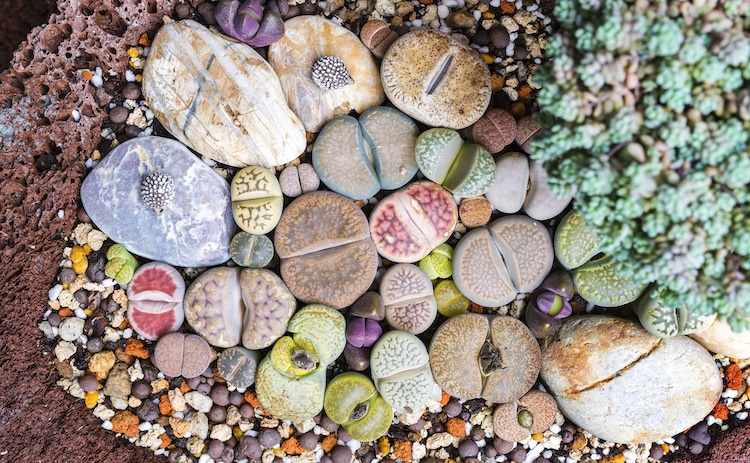
Photo: firefox/Depositphotos
They are nicknamed “living stones” thanks to their resemblance to pebbles.
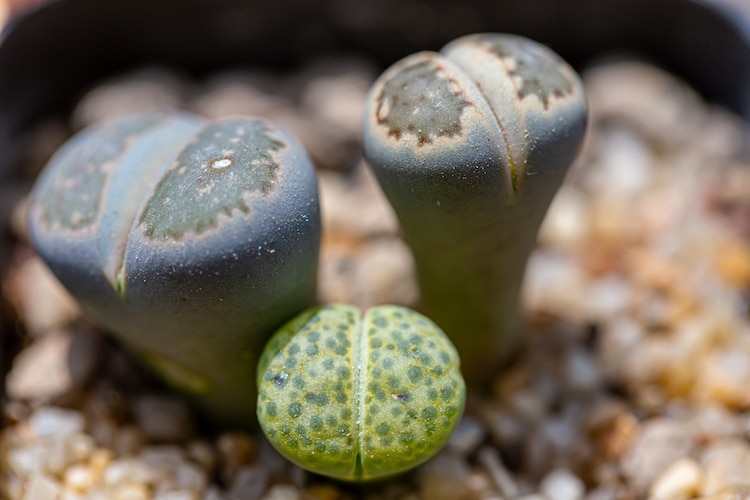
Photo: lobster20/Depositphotos
Each year, their bulbous leaves split and die back to allow a new fused pair of leaves to appear.

Photo: ChWeiss/Depositphotos
They also bloom white or yellow flowers.

Photo: Maxmaxmaxmax85/Depositphotos
Their unusual appearance and easy care make them popular houseplants.
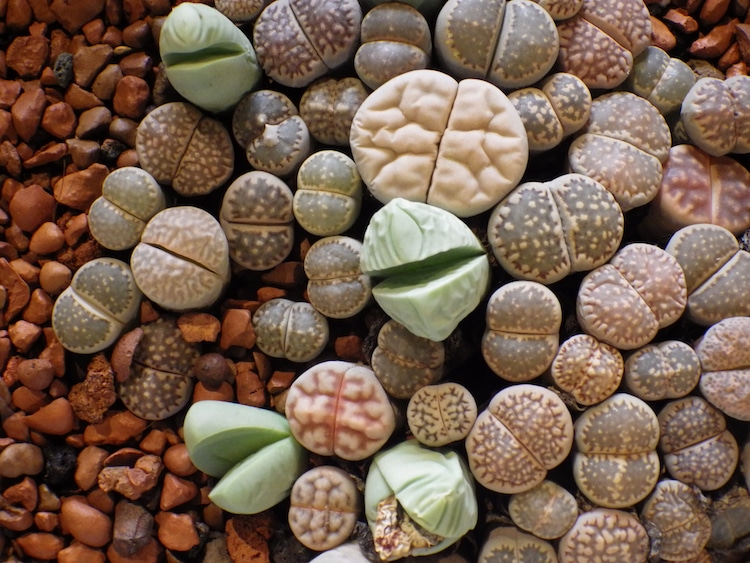
Photo: Wirestock/Depositphotos
Many vendors sell lithops seeds online so you can grow your own living stones.

Photo: Wirestock/Depositphotos
Related Articles:
Tiny Succulents Grow as Adorable Rabbit-Shaped Plants in Japan
Rare Heart-Shaped Succulents Let You Grow Love From the Ground Up
Rare “Mermaid Tail” Succulents Bring Sea-Inspired Magic to House Plants
These “Clear” Succulents Look Like Glistening Jewels Growing From the Ground











































































